Original - Odaily
Author - 0xSekiro
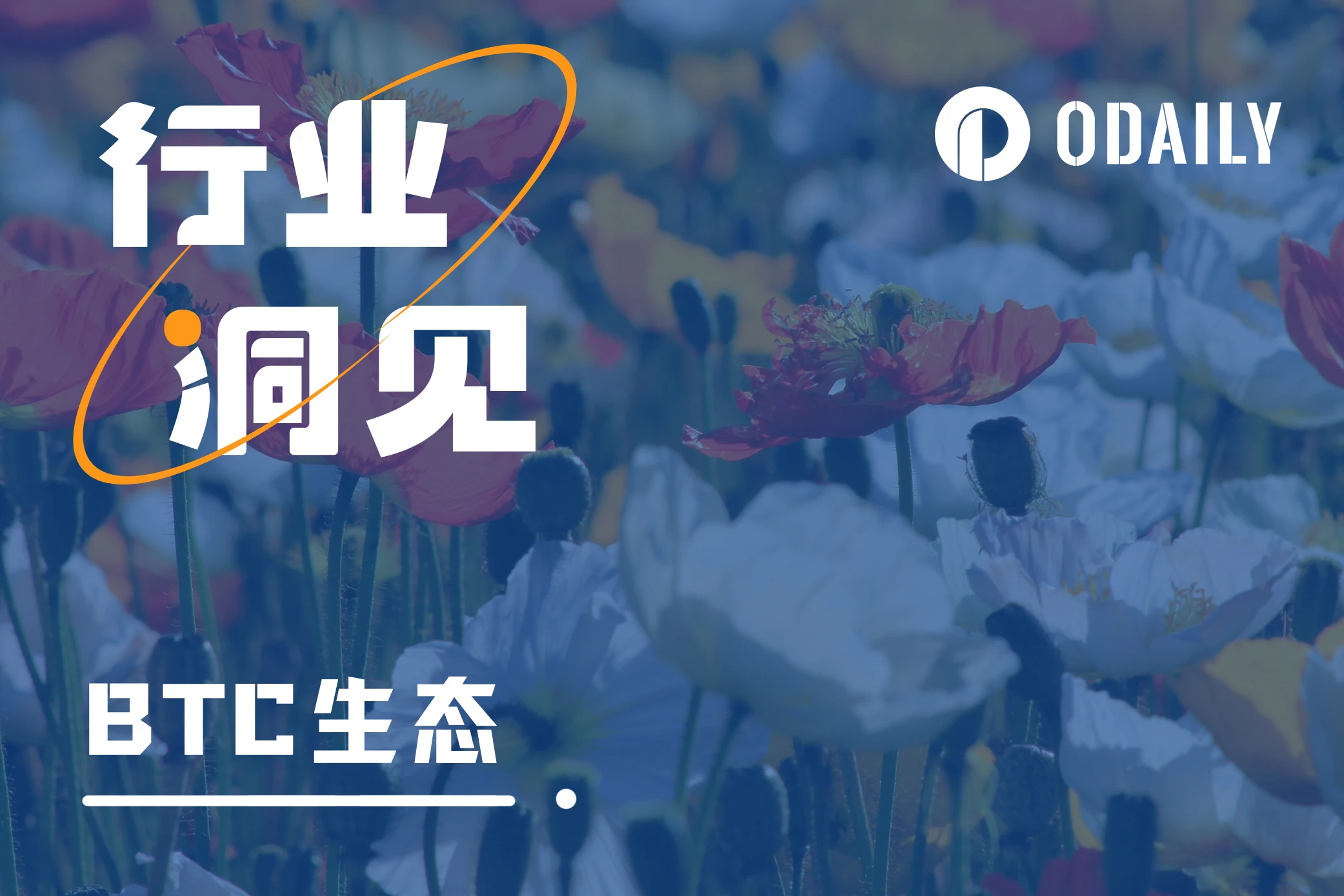 After 16 months, Bitcoin once again reached the $30,000 mark and hit a new stage high of $35,000. Behind the surge, there are many favorable developments in the Bitcoin spot ETFs of institutions such as BlackRock. Regardless of whether the ETF will eventually pass, but reflected in reality, it isThe sentiment of the entire Web3 industry is recovering and the BTC ecosystem is becoming more active.
After 16 months, Bitcoin once again reached the $30,000 mark and hit a new stage high of $35,000. Behind the surge, there are many favorable developments in the Bitcoin spot ETFs of institutions such as BlackRock. Regardless of whether the ETF will eventually pass, but reflected in reality, it isThe sentiment of the entire Web3 industry is recovering and the BTC ecosystem is becoming more active.
Around the time when the price of Bitcoin rose, for example, on October 19, Taproot Assets of the Bitcoin ecosystem Layer 2 track was announced to go online - Taproot has also become one of the protocols that has attracted much attention following the concept of Ordinals in the first half of the year. In addition, on October 25, BRC-20 founder domo announced the launch of the BRC-100 protocol.
In fact,In addition to Ordinals and Taproot, the Bitcoin ecosystem is far more prosperous than imagined.For example, the RGB protocol based on the iteration of the dyed currency concept, the Bitcoin smart contract platform RootStock, and the BTC ecosystem Layer 2 Stacks, which has seen a sharp increase in currency prices recently, etc. According to incomplete statistics, there are currently more than 10 protocols for infrastructure services in the Bitcoin ecosystem, and different protocols have derived different products.
Therefore, Odaily took stock of the BTC ecological protocol.
What are the BTC ecological protocols?
RGB protocol
The RGB protocol is derived from the coloring concept of Bitcoins classical expansion scheme and was developed by the LNP/BP (Lightning Network Protocol/Bitcoin Protocol) Standards Association. It is a smart contract system with scalability and privacy . At present, there are some token products appearing in the RGB ecosystem, such as Iris Wallet, MyCitadel, Bitmask, Shiro in the wallet track, Bitswap, Pandora Prime in the DeFi track, and Cosminmart, Infinitas, etc. in the ecosystem construction.
It is worth noting thatThe RGB protocol is also the current route choice alongside BitVM (Bitcoin Virtual Machine).BitVM is the abbreviation of Bitcoin Virtual Machine. It is based on ETHs EVM and allows developers to run complex contracts on Bitcoin without changing the basic rules of Bitcoin.
RGB also faces some issues as follows:
(1) Verification efficiency needs to be improved. RGB uses client-side verification, which requires always tracing back to the founding state of the issuance contract in the users client data. If the history of asset transactions is long, the amount of data to be verified will be exponentially enlarged, seriously affecting the verification efficiency.
(2) The project iteration speed is too slow. Since the RGB protocol was proposed in 2018, the first available version v 0.10 was not launched until April this year. Therefore, it is questionable whether the RGB protocol receives official attention.
(3) Development costs are too high: This is also due to the long time gap between the original content of the protocol and the available version.Many development formats and logic have failed to keep up with the times.Developers need to adapt to the early RGB specifications, which undoubtedly increases the difficulty for developers to enter.
The most important thing is that the ecosystem is in its early stages, and there is currently no mature specific framework to demonstrate. The projects within the ecosystem are mostly recurrences of the standard paradigms of other ecological projects (such as wallets, Swap, Launchpad and other classic three-piece sets), and there is no leading product. The birth of.
Stacks:
Stacks is currently very popular in the market. As the hottest Layer 2 project in the BTC ecological narrative,Its token STX has risen from US$0.4 to a maximum of US$0.73 in the past month, with a maximum increase of more than 80%.
Stacks is a Bitcoin ecological smart contract platform using the Stacking consensus algorithm. It was officially launched in 2019, and its token STX also became the first Token recognized by the U.S. SEC for issuance.
The advantage of Stacks is that it has launched the PoX consensus mechanism. By using Bitcoin as the basic chain and Stacks as the second-layer chain, in each round of transactions, the leader selected by the miners based on the random function locked by BTC is responsible for the block packaging on Stacks. And sent to the Bitcoin main chain, thus increasing the computing speed of the entire chain.
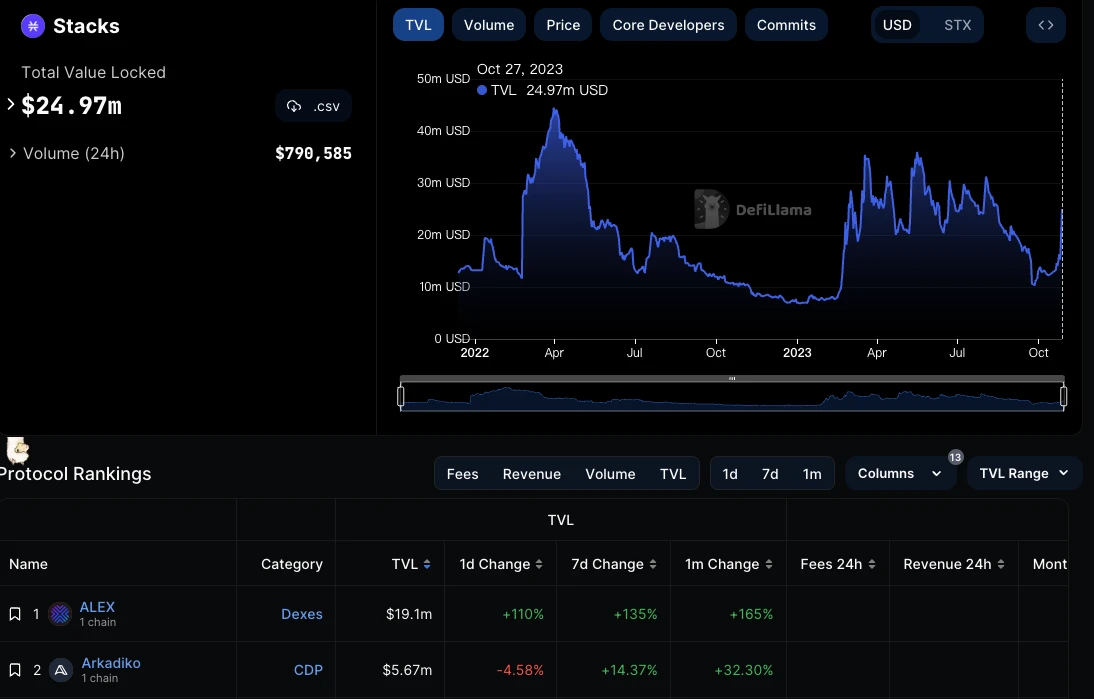
As of now, a total of 90 projects have been deployed in the Stacks ecosystem. However, the TVL volume contained in these 90 products is relatively small.DeFilama data shows that the current total TVL of Stacks is US$25.88 million, of which the number one product is the decentralized exchange ALEX, with a TVL of approximately US$19.66 million.
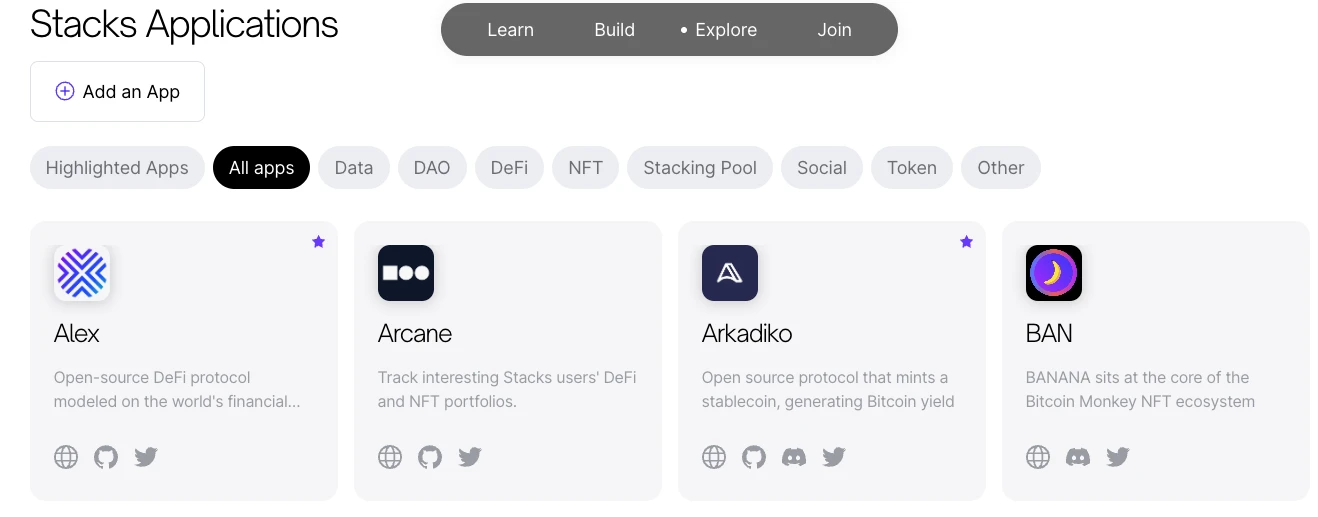
Taproot protocol
Taproot Assets Protocol: Taproot Assets is a Bitcoin meta-protocol that allows developers to issue assets on Bitcoin and the Lightning Network through Taproot transactions. Not long ago, on October 19, Lightning Labs officially launched the protocol.The Taproot Assets protocol has also become another BTC protocol that has attracted much attention after Ordinals since the BTC ecological narrative began.
As a protocol launched by Lightning Labs, Taproot Assets achieves a high degree of integration, so users can conduct fast and cheap transactions based on Taproot. Based on Bitcoin UTXO, Taproot is also compatible with protocols such as RGB mentioned above. In addition, Taproot is very popular overseas, and it also has a certain Fomo sentiment in China. At present, tap tokens have been deployed, and all chips are in the hands of the project party, which may be used for project financing and ecological airdrops.
BRC-100 :
BRC-100 is a Bitcoin protocol built based on Ordinals. In addition to its own token attributes, BRC-100 is also an application protocol. Developers can also design DeFi and other application products based on the BRC-100 protocol.
Compared with BRC-20, BRC-100, in addition to continuing the existing creation, minting and trading functions of BRC-20, also introduces the decentralized calculation of FT tokens. The sight of this function means that BRC-100 can deploy a large number of Token-related products like ERC-20, such as DeFi-oriented AMM DEX, lending functions, etc.
Rootstock:
Rootstock is a Bitcoin smart contract platform that was launched as early as 2018 and initially raised 22,000 BTC. Its main advantage is that developers can build Dapps based on Rootstocks own OS framework. In addition, the virtual machine of RIF (Rootstock Infrastructure Framework) is also compatible with EVM, so the tokens of the Ethereum ecosystem can be integrated with the Rootstock ecosystem. Tokens to interact with.
According to data from Rootstock’s official website, its current ecological lock-up TVL is US$300 million, including 3,334 BTC (approximately US$115 million). The monthly transaction volume is 68,400 and the active accounts are 72,292. It is considered to have relatively high performance among many protocols in the BTC ecosystem. Outstanding Agreement.

As an established side chain,There are currently 104 projects in the Rootstock ecosystem.The scope covers 15 tracks including Swap, cross-chain bridge, lending, oracles, payment channels, wallets, etc. It can be said to be one of the more complete BTC ecological protocols currently.
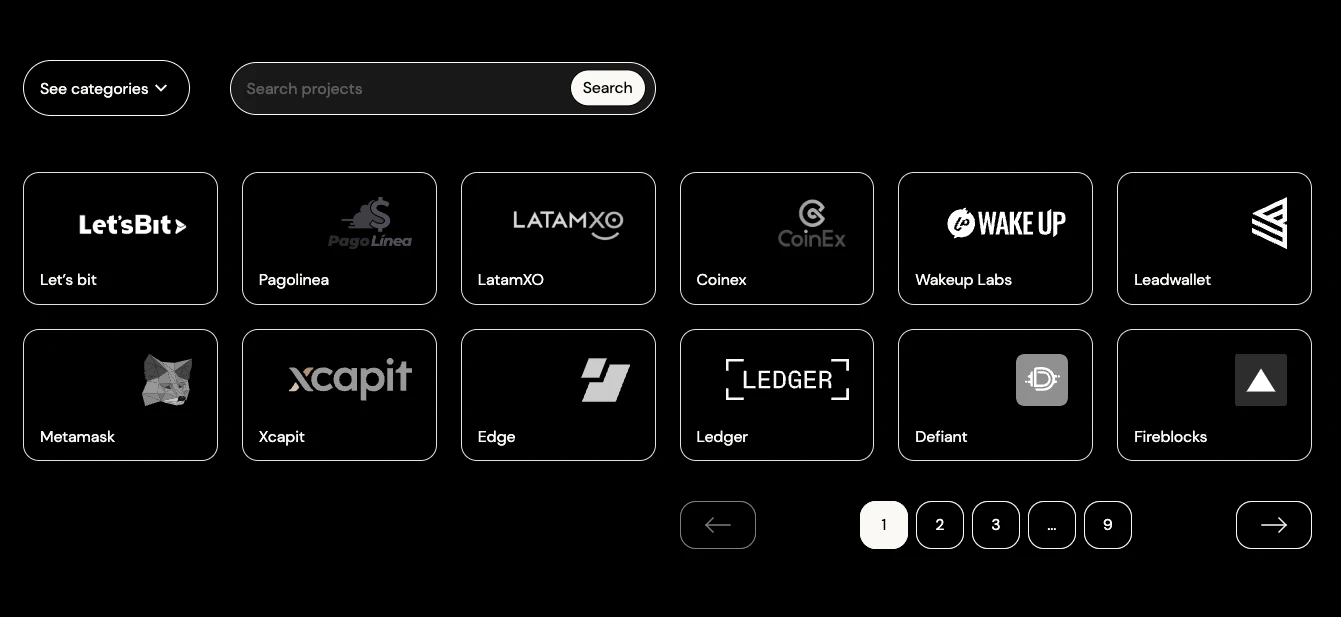
As for projects worthy of attention in the ecosystem, we can explore from the lending aspect of the current BTC ecosystem that is relatively scarce, such as sovryn on Rootstock, which is specifically used for uncustodial, unlicensed Bitcoin lending and margin trading. Currently, according to DeFilama platform data, Sovryn’s current total locked position is US$26.28 million.
Two questions to think about
Generally speaking, although the current BTC ecosystem has many protocols and countless products based on various protocols, there are two problems that need to be solved:
1. The problem of the number of active developers.According to Developerreport data, as the cryptocurrency with the largest market capitalization, the current number of BTC ecological developers is 340, ranking only fourth in the industry, lower than the 463 people of Cosmos, which is third, and far lower than the first. Ethereum - the number of active developers is 1889, which is approximately 5.6 times that of the BTC ecosystem.
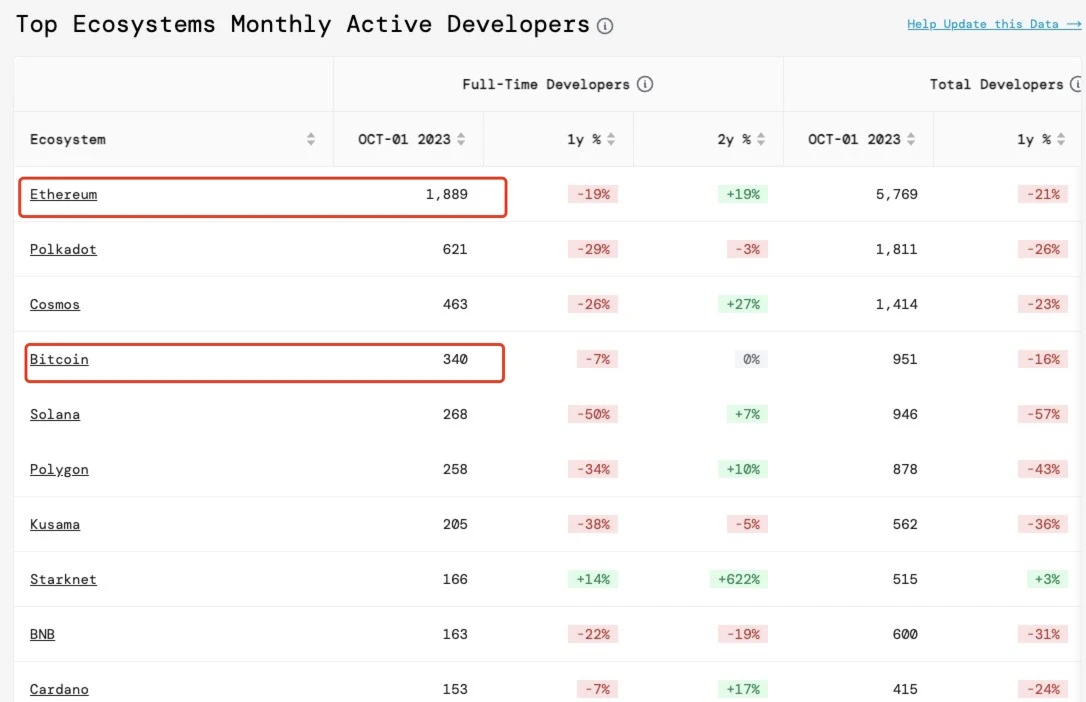
This is only based on calculations based on full-time developers. If part-time developers are included, the gap will be even greater. The BTC ecosystem currently has 478 part-time developers, and the total number of full-time and part-time developers reaches 818. In contrast, the total number of part-time and full-time developers in the ETH ecosystem is 5,012, a 6-fold difference.
The reason why we focus on the number of developers here is because the prerequisite for an ecological explosion is to be able to naturally attract more developers to settle in. A sufficient number of developers can complete the overall ecological product structure and drive the operation of the ecological flywheel.
The improvement of the ecological system means that the difficulty of entry for ordinary investors is reduced and the willingness to enter is increased. When the ecology shows sufficient traffic potential, institutions and large foreign funds will enter the market, thereby promoting the prosperity of the ecology as a whole.
It is worth noting thatThe current number of developers in the BTC ecosystem is roughly equivalent to the number of developers in the ETH ecosystem in 2017-2018.
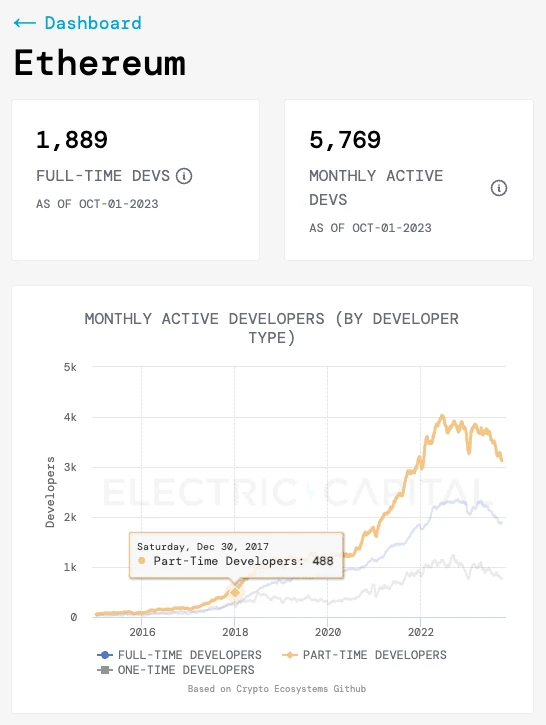
We can understand that the BTC ecosystem is currently on the eve of an explosion, and the myth of the ETH ecosystem may be repeated in the future. At the same time, it can also be considered that the current BTC ecosystem is still in an imperfect stage.
2. How to attract the attention of Maxi Holders in the BTC ecosystem.Whether it is Ordinals, which was popular in the early days, or Rootstock, which is currently in the best development state, its user composition mainly comes from the traffic overflow from the EVM ecosystem. For example, Ordinals, the standard BRC-20 it relies on is similar in expression to the ERC-20 standard. Of the total pledged amount of Rootstock, only $115 million comes from BTC, which accounts for only 38% of the total TVL of $300 million. The reason why Rootstock was able to collect $300 million in pledges has a lot to do with its compatibility with EVM.
In other words, the giant whales of the BTC ecosystem have not yet entered the game. It is important to be able to absorb external traffic, butHow to interest the giant whales in the ecology itself may be more important.After all, in the face of the cryptocurrency market capitalization of US$1.26 trillion, BTC market capitalization accounts for 51.22%, and ETH accounts for 17.42%. The former is 2.94 times the latter.
Stacks has been faster when it comes to unlocking liquidity for BTC Holders. On October 20 this year, Stacks launched the sBTC developer version. The initiative aims to launch sBTC, a decentralized, smart contract-embedded token that is pegged 1:1 to BTC. In this way, based on sBTC, application products such as DeFi and NFT native to the BTC ecosystem can be deployed, further releasing the flow potential of Bitcoin between L1 and L2.
Summarize:
It has been 5 years since the birth of old protocols such as RGB and Rootstock, and during this period, new protocols such as Ordinals and Taproot have also emerged. BTC, which was originally quiet, has gradually become a world.
Wherever there are rivers and lakes, there are disputes.While different protocols are jointly promoting the prosperity of the BTC ecosystem, they are also competing with each other.According to the Matthew Effect that has been proven repeatedly in the Web3 industry, a protocol that can truly survive in the ecosystem and have observable significance may need to be found among the Top 5. The protocols that can truly be called the leaders and occupy the vast majority of ecological resources may only be the Top 3.
At present, everyone is blooming, vaguely looking like the early days of the Ethereum ecosystem, but who can really survive and succeed? Maybe more time is needed to verify.










